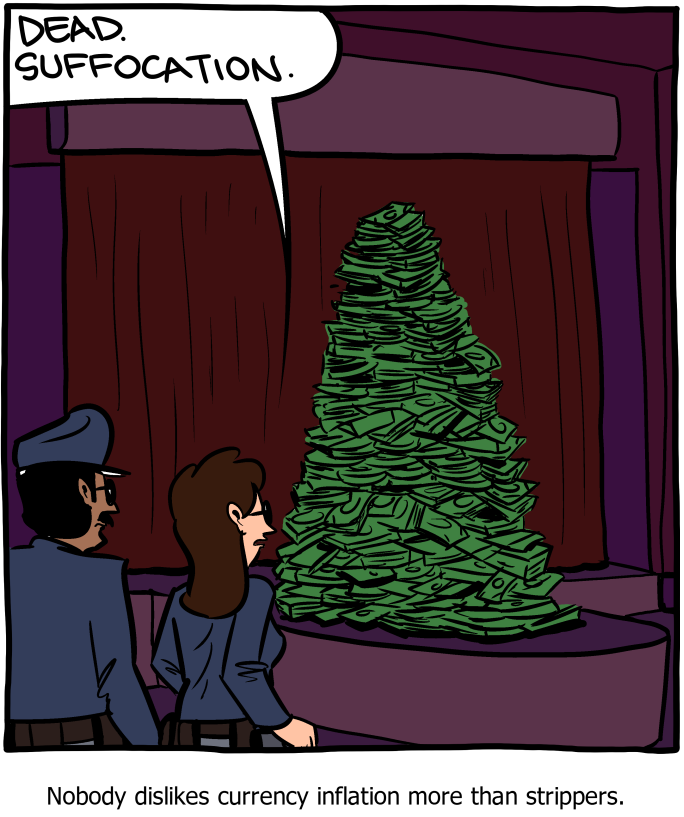From Economists Do It With Models:
I apparently have the approximate maturity level of a 12-year-old boy, since I cannot stop laughing at this:

I think part of my amusement comes from the fact that Tyler Cowen took up the cause of overthinking Zach’s cartoons,
and there are some choice comments on that post. In case you don’t
have time to read them all, just know that the best ones focus on the
demand for $2 bills by strip club owners and a perfectly reasonable, in
my opinion, speculation regarding the degree to which Canadian strippers
jingle, and there are plenty of bad puns involving concepts such as
“convexity” and “sticky wages.” (In related news, I’m a tad bitter than
I didn’t think of the puns first.)
Tyler’s overall point is that strippers may actually prefer inflation:
Let’s say the standard tip is a dollar, and price
inflation lowers the real value of that dollar. A lot of customers
won’t substitute into stuffing $1.43 into the stripper’s garments. They
might do two or three singles, but strippers will be shortchanged at
various points going up the price pole. There is something about
handing out a single bill that is easier and more transparent, or so it
seems.
Say inflation gets high, or runs on for a long time for a large
cumulative effect. At some point the customers switch to giving $5
bills.
Does it help strippers if the Fed issues lots of $2 bills? Well, the
leap up to the larger tip comes more quickly, but the customers also
stay at the $2 tip level a long time before moving up to $5.
At some margins inflation is bad for current strippers, but good for
some set of future strippers. If the economy is close to the margin
where individuals upgrade from a $1 tip to a $5 tip, then inflation is
good for current strippers but bad for future strippers (for a while).
I think now is an excellent time for a discussion on nominal versus real
wages. Nominal wages, which are what most of us are used to thinking
about, are just the actual nominal-currency-denominated wages that a
worker receives. Real wages, on the other hand, are wages that are
denominated in terms of the amount of stuff that the worker can buy with
the compensation. Put a bit more simply, real wages are
inflation-adjusted wages. In order for the situation illustrated above
to actually occur (and in order for Tyler’s argument to make sense), the
consumers in the stripper market must have an interest in keeping
strippers’ effective real wages stable in the face of inflation....MORE
